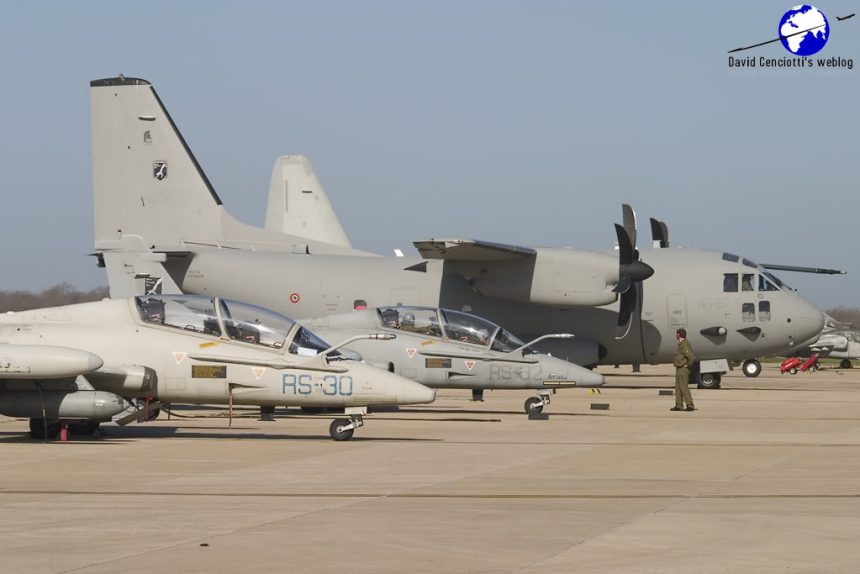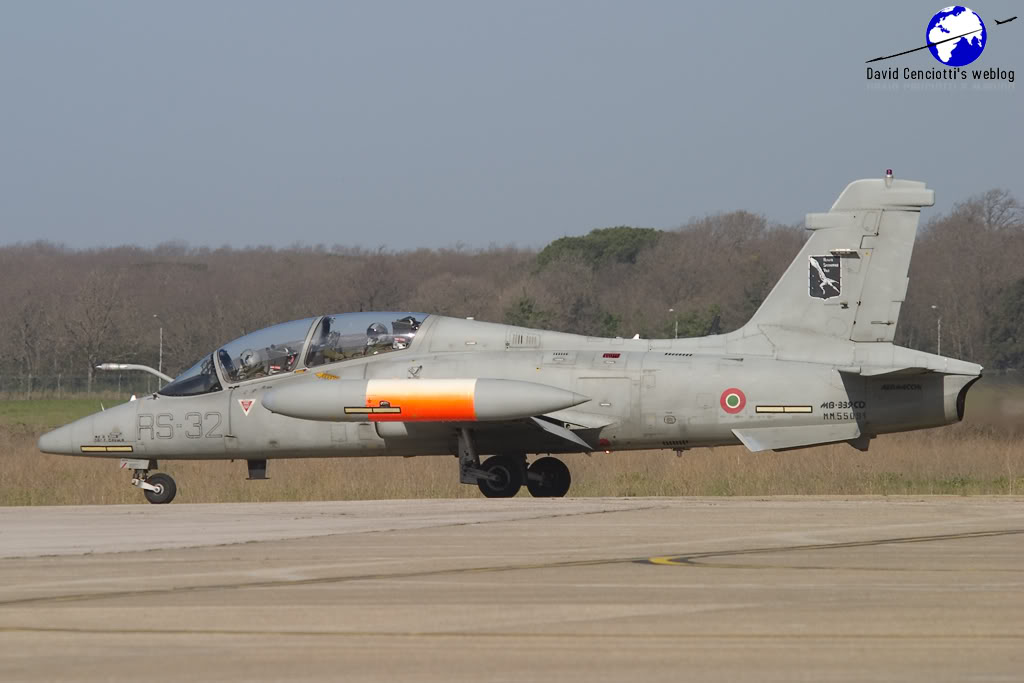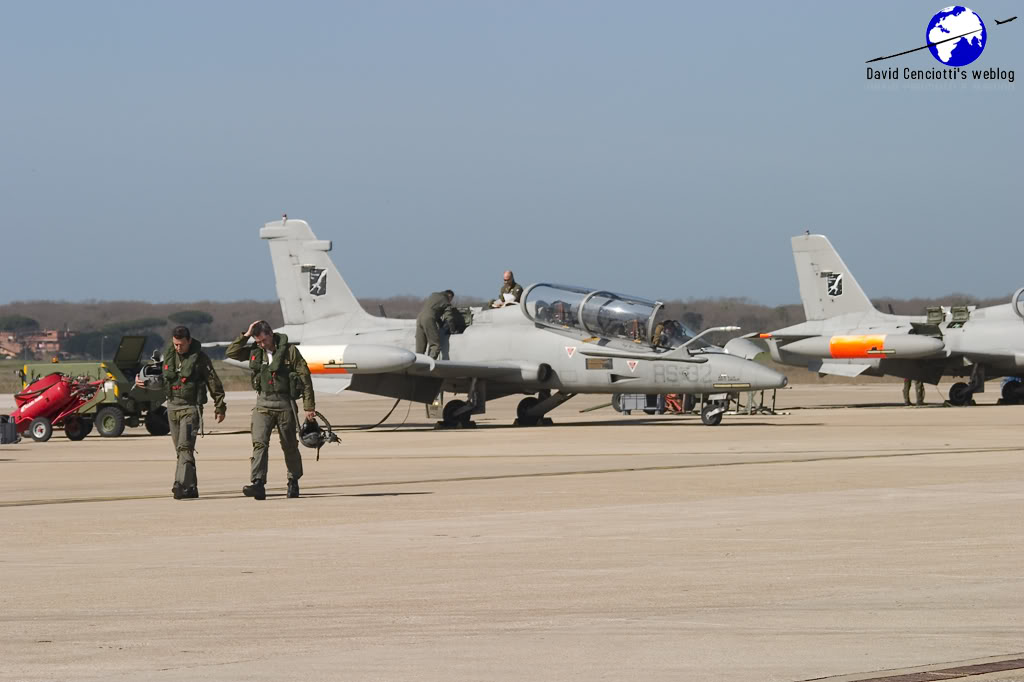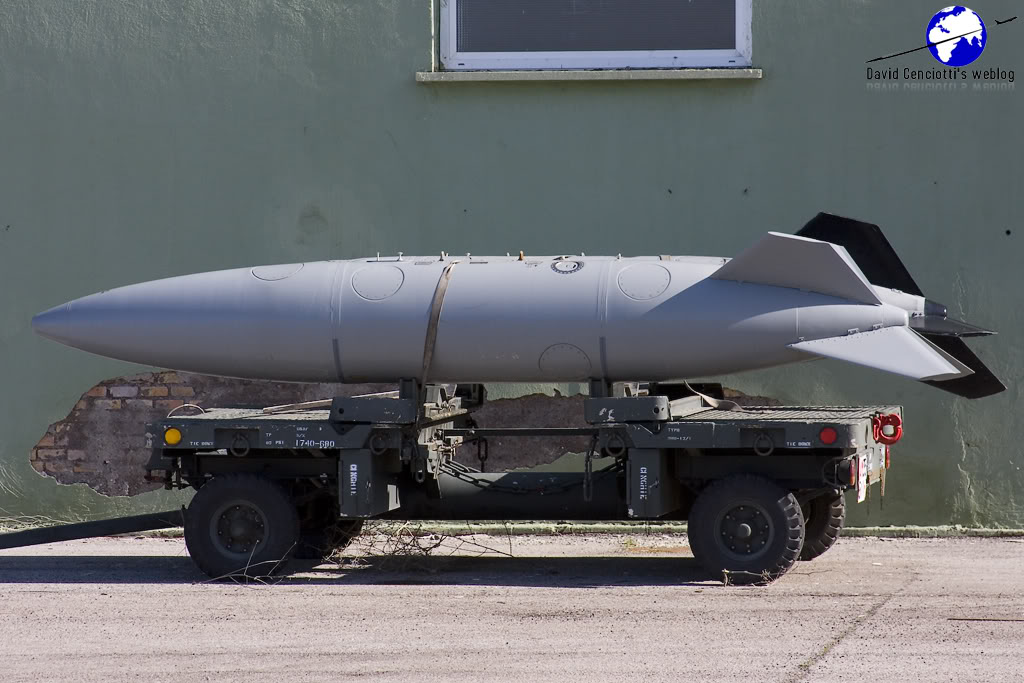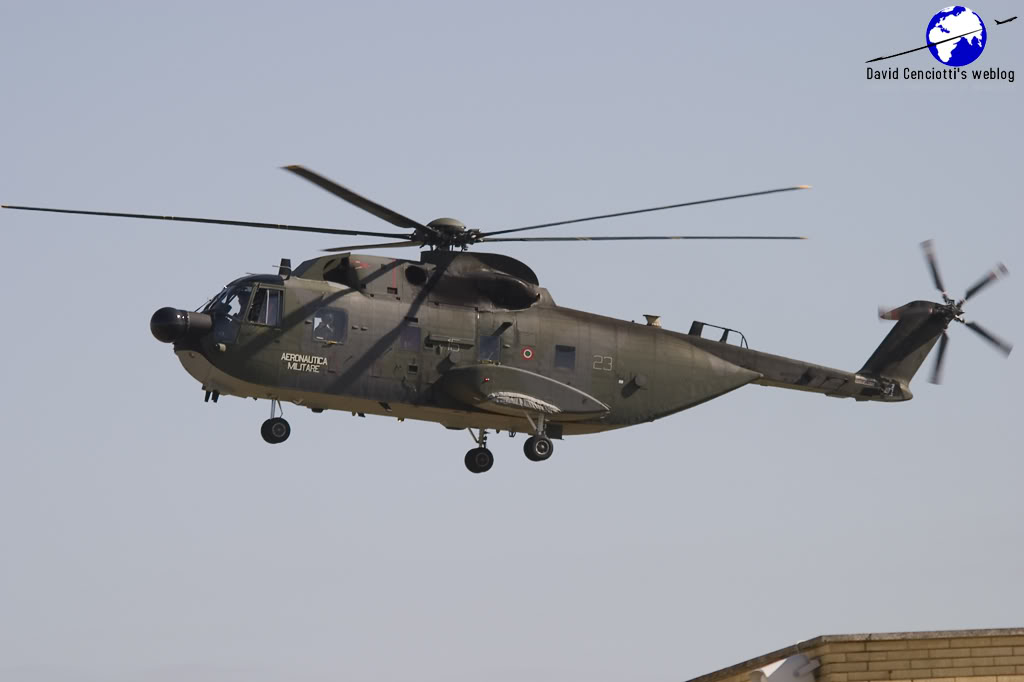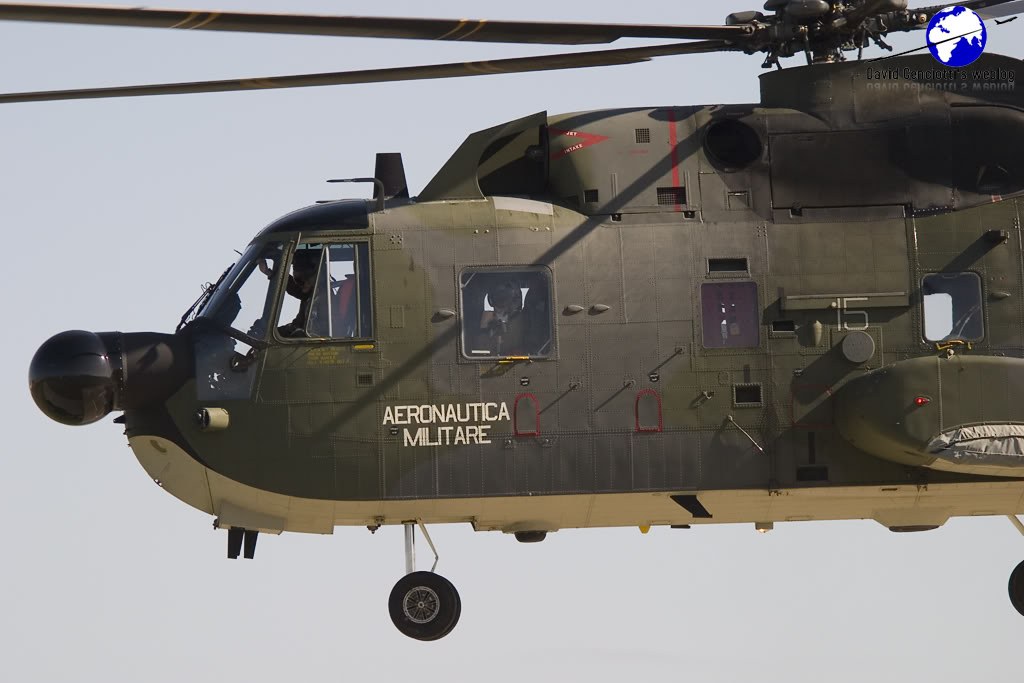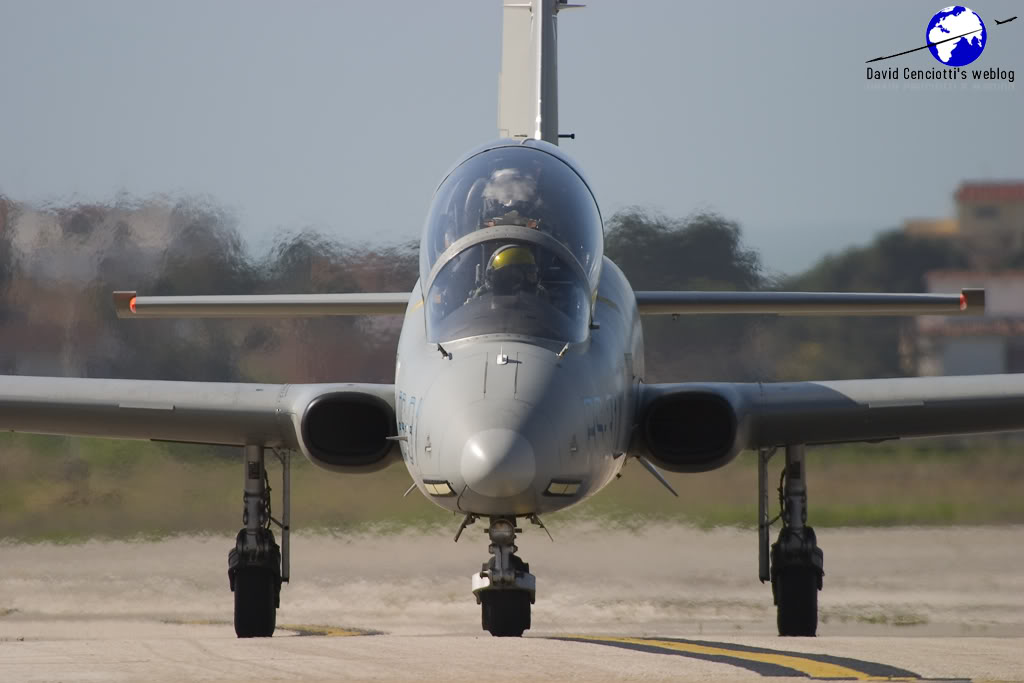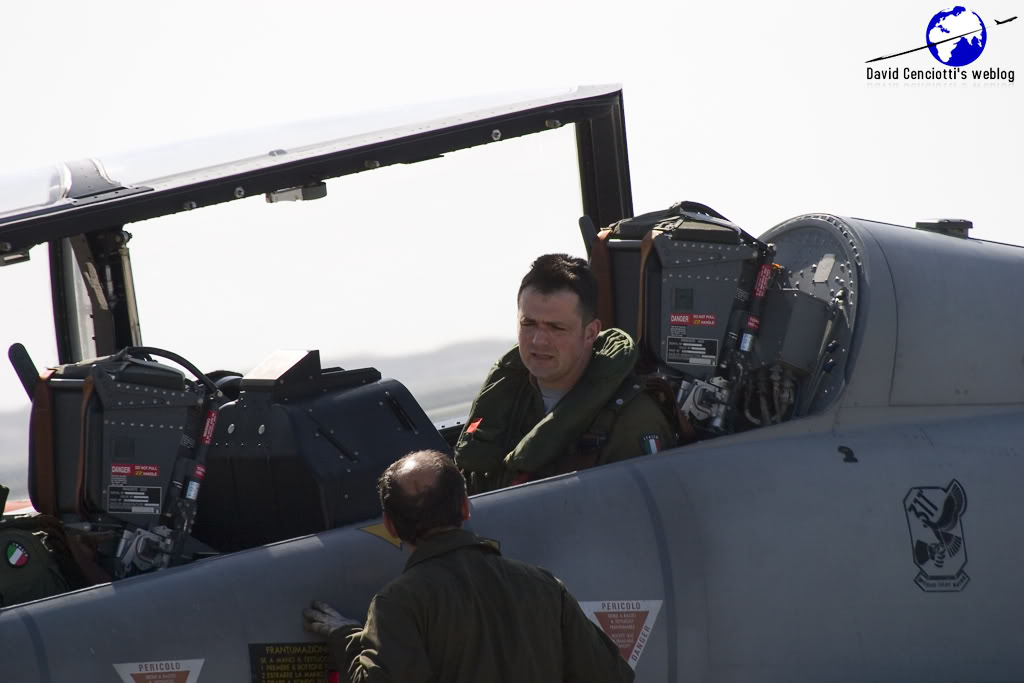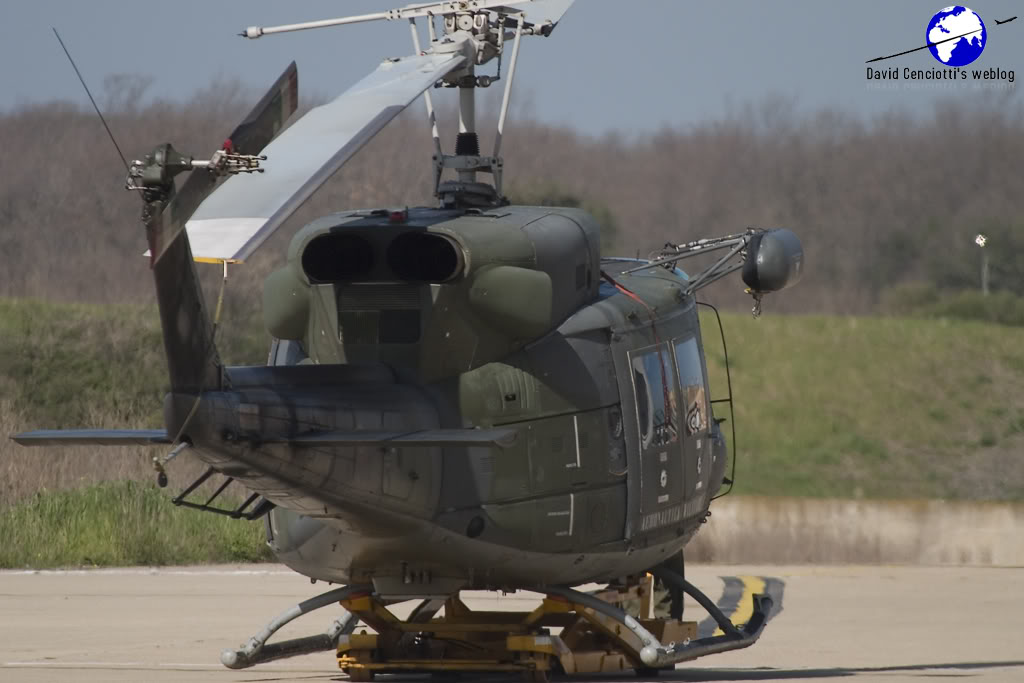On Mar. 11, 2009, I visited the flight line of the 311° Gruppo of the Reparto Sperimentale Volo, the Test unit of the Aeronautica Militare Italiana (Italian Air Force, ItAF), inside Pratica di Mare, the largest italian military airport.
Accompanied by Maj. Igor Bruni, one the RSV pilots (and the MB339CD display pilot in the past two years), I spent a few hours on the “PB” apron of the Sperimentale where I was able to observe the daily flying activity. The flight line had many aircraft parked or being prepared for sorties: MB.339A, MB.339CD, C-27J, C-130J, NH.500E, Tornado IDS, AMX-T ACOL, Tornado ECR, AB-212. More or less the majority of the aircraft types in service with the ItAF were in the flight line of the squadron.
Recovered inside a hangar was also an interesting aircraft I was not allowed to photograph but that is far from being a secret addition to the RSV fleet: read here.
A few missions were flown during my stay. In the early morning, the MB.339A CSX 54453/RS-30 departed to perform a flight inside the R-62 area. In the front seat a former 23° Gruppo pilot recently assigned to the 311° Gruppo was performing a sort of “orientation flight” with Maj. Giacomo “Jack” Iannelli on the back seat. Later, the MB.339CD MM55091/RS-32 also departed for a local sortie, followed by the C-27J CSX 62219/46-87.
Before noon, both MB.339 (1 CD + 1 A) took off to perform a training mission together. Interestingly, the two aircraft departed and joined up using an airborne pick up procedure. As I already explained in a previous post, when aircraft of dissimilar type depart from the same base and need to rejoin as soon as possible, they can perform a particular procedure named “airborne pickup”.
Typical scenarios are the rejoin after takeoff of a tanker with the receivers flying as a single flight or of a prototype with a chase aircraft during a test flight. Airborne pickup starts with aircraft departing from the same airbase. Let’s explain it in a typical scenario: a mission composed by two aircraft, a leader (for ex. an AMX) and a chase (an MB.339). The two aircraft taxi together but the chase lines up and takes off first (after receiving clearance to perform the procedure). Immediately after departure, the MB.339, makes a 180 turn back towards the tarmac and enters the downwind leg for the runway in use. “30 seconds!” is the radio call of the chase pilot to time his approach to the runway to the leader’s take-off. While the MB.339 is in the second base turn to head back to the runway, the AMX eases its brakes to start the take-off roll. If everything goes on as planned, the MB.339 should be flying in formation with the leader as soon as the AMX has completed the departure and before it starts the next turn inbound the first waypoint.
I was on the backseat of the MB.339 when Capt. Maurizio performed this kind of procedure to rejoin with the AMX of the 311th Gruppo flown by Capt. Locatelli at the beginning of an air-to-air photo session with the RSV (Reparto Sperimentale Volo). The procedure was perfectly executed and we were on the right wing of the AMX in time, just before it started a left turn inbound the sea but, obviously, things can be more difficult if aircraft involved have much different take-off performances. Just think about rejoining an MB.339 with an F-104 taking off with full afterburner in clean configuration.
Perfect calculations and quick corrections (if needed), are paramount to succeed in this procedure, performed visually even if flying under IFR rules.
During the morning spent in Pratica I had also the opportunity to watch the training activity performed by a single HH-3F of the 85° Gruppo SAR that made a series of visual patterns and landings into the helipad located behind the RSV area.

